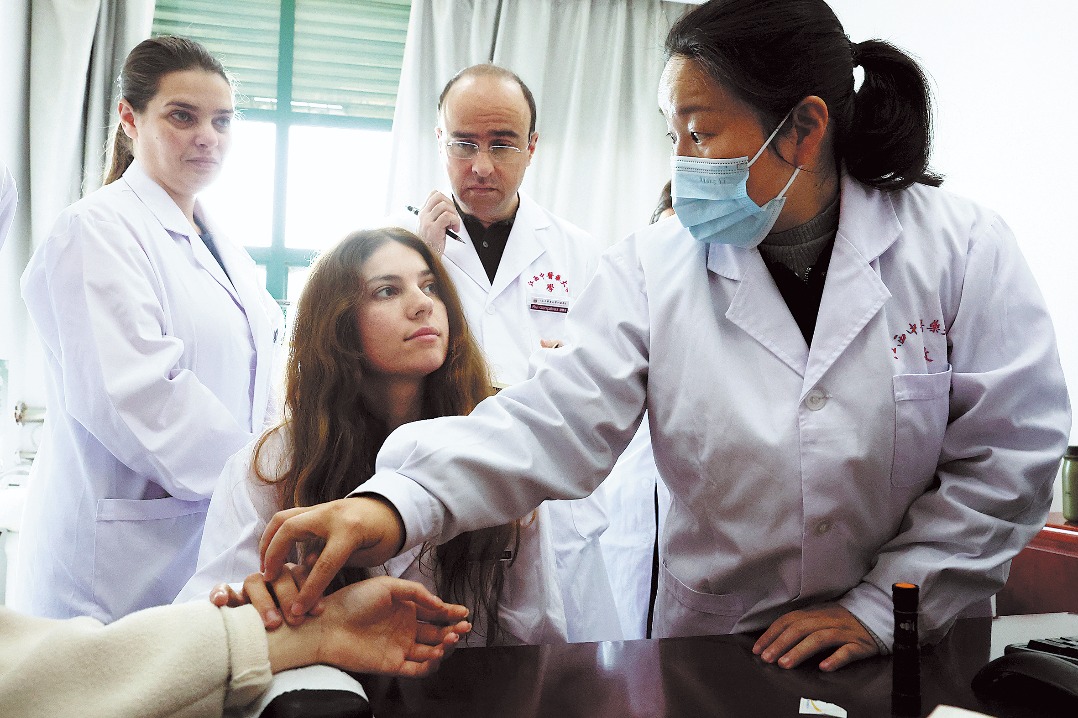Coronavirus changing life on the elevator
By SCOTT REEVES in New York | China Daily Global | Updated: 2020-07-21 10:44

Technology and efforts to curb the spread of the coronavirus are expected to turn the American elevator ride from a chatty discussion about weekend plans, movies, restaurants, sports and kids into a silent, stoic trip.
Otis Worldwide, the US' leading manufacturer of elevators and escalators, is leading the charge into the post-coronavirus world.
"We understand that health and safety of tenants and passengers is the top priority for our customers right now," Robin Fiala, vice-president for sales and marketing at Otis, a Farmington, Connecticut-based company, said in a statement.
"Whether it's high-rise office buildings scheduled to reopen soon, residential complexes with more tenants working remotely, or airports anticipating future travel, our customers are asking for our help and we are collaborating with them to find new, innovative solutions to address their challenges now and in the future."
New technology will shorten the wait and time that employees spend on elevators. It's hoped that limiting the time in a confined space will reduce the risk of spreading the coronavirus.
Research by Otis Worldwide found that 138 seconds is the average wait time for an elevator trip in a 16-floor building with a conventional call system. That's cut to 13 seconds with new computerized dispatch technology.
The average time spent in a standard elevator is 89 seconds, and that's cut to 50 seconds with the new technology because the elevator will stop only at pre-selected floors.
In New York and other major cities, a 16-story building is smaller than many, but the goal is clear: Use new technology to shorten the wait and speed the elevator ride to increase the number of people served by each elevator.
Otis now offers "touchless" technology allowing passengers to call elevators from their smartphones with a downloadable app or Bluetooth. That eliminates the need to touch the call button in the lobby or in the car and reduces exposure to potential germs on common surfaces.
Some elevators now are equipped with voice control or can be directed to the desired floor by waving an ID card before an electronic reader.
If all else fails, office workers can fall back on antibacterial wipes or latex gloves when punching an elevator call button.
Limiting the number of passengers to four per elevator makes good social distancing sense, but it's also likely to create longer wait times – especially if people line up 6 feet apart in the lobby to wait for the next car.
In response, Otis has developed "shuttles" to take workers to specific floors. Different banks of elevators will take passengers to specified floors automatically.
This will eliminate crowding in the lobby, where employees previously boarded at random for their floor, cut wait time and speed the trip by stopping only at selected floors, Otis said.
Elevators could be programmed by job category. The CEO and other C-level executives could be taken directly to their floors while other employees could be sorted by job classification.
But with many employees choosing to work from home, the number returning to the office is likely to be smaller than pre-pandemic levels. That should help reduce wait times for an elevator even without new systems, but it doesn't change the need for safety precautions.
Otis also has introduced purification systems for elevators, including electrically charged plasma fans and ultraviolet lamps to kill germs and other microorganisms in recirculated air.
Those riding an elevator still would be required to wear a mask.
For escalators and moving walkways, managers are installing ultraviolet lights to sanitize handrails. The system has been installed at the Anchorage, Alaska, airport.
"It was critical in helping our team plan for the future of travel with innovative technology to keep our equipment clean and reduce the need for direct interaction," Lawrence Swanson, airport facilities manager, said in a statement. "This is critical in the current environment."
























